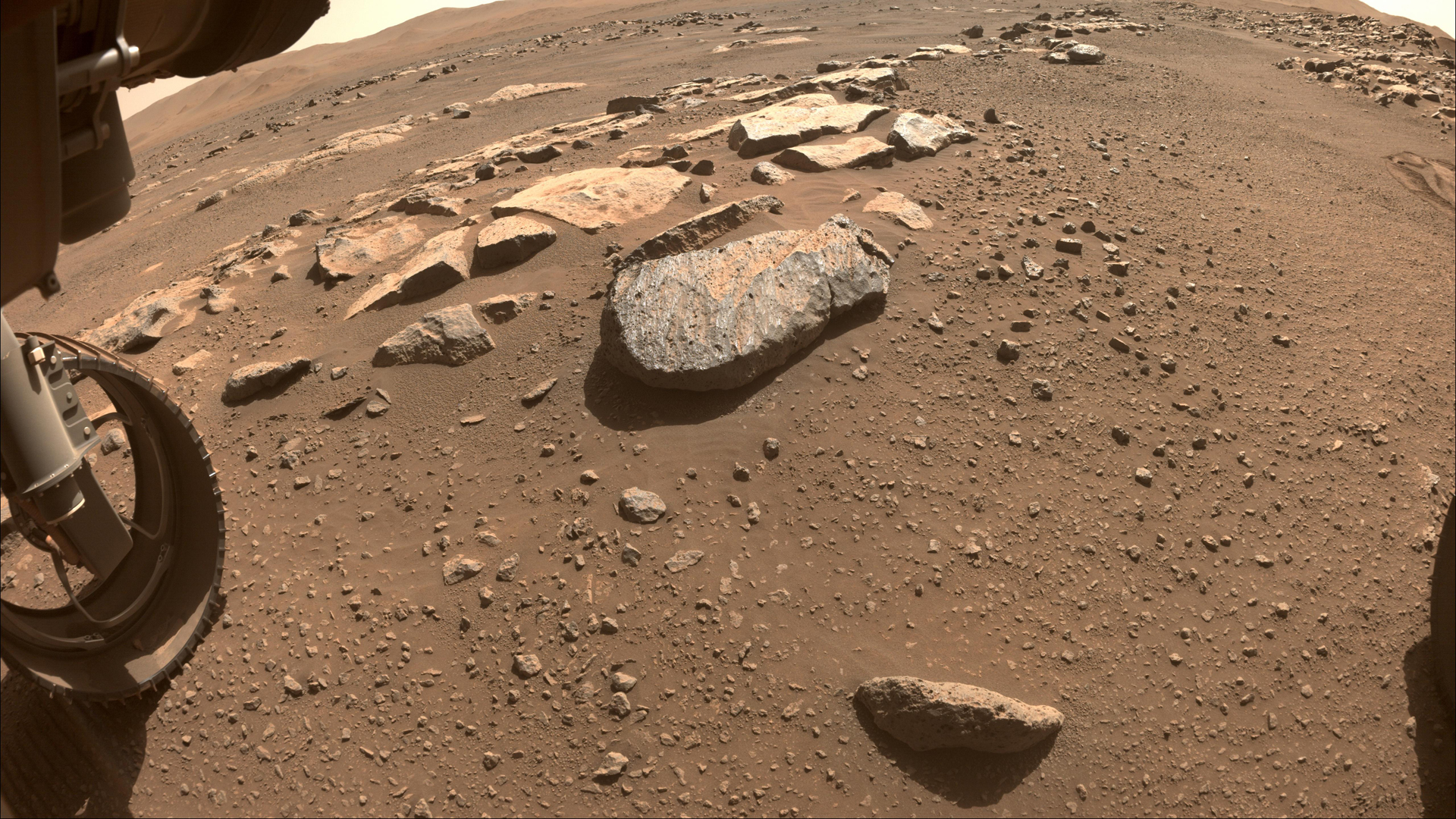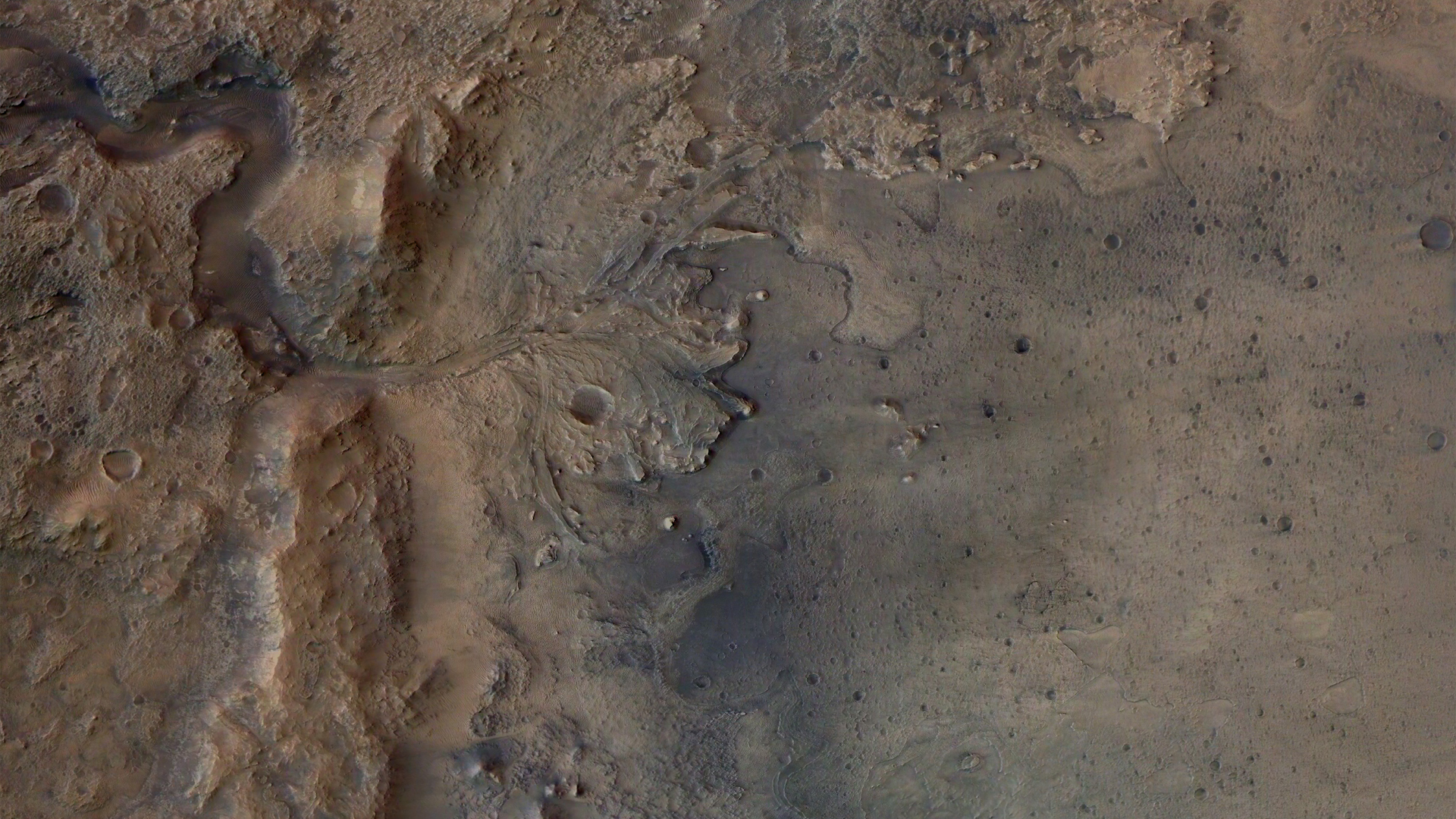Perseverance Mars rover finds surprising volcanic rocks in crater that was once a lake
These rocks really shouldn't be there.

The surprising discovery of volcanic, "igneous," rocks by NASA's Perseverance Mars rover on the Jezero Crater's floor could be the key to unlocking Mars' climate history and revealing exactly when it was wet and potentially habitable, according to a comprehensive analysis of findings made during Perseverance's first year on the Red Planet.
"We were very excited to find igneous rocks," Ken Farley, a professor of geochemistry at California Institute of Technology (Caltech), project scientist on the mission and lead author of the new paper, told Space.com.
The discovery of volcanic rocks was a complete surprise, since the expectation was that the Perseverance rover would be landing on sedimentary rocks formed from mud and detritus laid down by the ancient lake that filled the Mars rover's landing site, Jezero crater, about 3.7 billion years ago.
Related: 12 amazing photos from the Perseverance rover's 1st year on Mars
"Most of us had expected to be studying rocks deposited by the lake, and it took us quite a while to come to terms with the fact that the rocks on the crater floor are igneous," Farley said.
Perseverance landed on Mars on Feb. 18, 2021, with the 28-mile-wide (45-kilometers) Jezero Crater chosen as its landing site because of an extremely prominent and ancient river delta that spills into the crater. Planetary scientists and astrobiologists hope that such an environment would have been conducive to life billions of years ago. Indeed, some of the rocks found in Jezero Crater have a similar composition to rocks from Earth's deep subsurface, where the oxidation of iron through interactions with water can produce molecular hydrogen (a potential energy source for microbial life) and hydrocarbons such as methane that can act as the building blocks of some of life's more complex compounds.
The origin of Jezero's igneous rocks remains a mystery, since there are no obvious volcanic features in or near the crater, according to Farley. Perseverance has been studying two formations of igneous rock, named Séítah (after the Navajo word for "amidst the sand") and Máaz (the Navajo for "Mars"), with the latter overlying the former. Séítah is rich in olivine, which is a common volcanic mineral made from magnesium-iron silicate. Meanwhile, Máaz is interpreted as having formed from lava that flowed over Séítah.
Breaking space news, the latest updates on rocket launches, skywatching events and more!

In a second paper, led by Svein-Erik Hamran, a professor of remote sensing at the University of Oslo, Norway, results from Perseverance's ground-penetrating radar show that the entire geological unit containing Séítah and Máaz extends underground and has been partially uplifted, placing it at an angle.
"We really are puzzling over that one," Farley said. "It's a very distinctive feature — an almost 1-kilometer-long [0.6 miles] ridge of rock that is tilted by about 10 degrees."
This finding is unexpected because to lift geological units like that requires exceptional tectonic forces, but Mars does not have plate tectonics, nor is there any strong evidence that it ever did. "It's safe to say that the rocks were tilted after they were deposited by some phenomenon yet to be determined," Farley added.
The lake filled Jezero sometime after Séítah and Máaz formed, covering them with mud that ultimately formed a deep layer of sedimentary rock. But as Mars' climate changed, the lake dried up, exposing the sediment. "Since then, it's been sitting there being eroded, mostly by wind," Farley said. "Three-and-a-half billion years' worth of blowing sand can really sculpt a landscape."
One of the things that sets Perseverance apart from previous rovers is its ability to cache samples of rock and soil for a future mission to retrieve and return to Earth. NASA and the European Space Agency are working together on a sample-return mission to launch in 2028, and Perseverance has taken vital samples of igneous rocks found on the crater floor. For his part, Farley can't wait to get his hands on them, because in a terrestrial laboratory igneous rocks can be more easily dated. Scientists would be able to provide dates to the timeline of Jezero Crater that are far more accurate than those estimated from counting craters (the more craters there are, the older a surface is).
"The igneous rocks and the lake are both very old, in the vicinity of 3.7 billion years," Farley said. "I say that glibly, because that age is based on crater counting and the uncertainty on that is plus or minus half a billion years. That is an enormous uncertainty!"
Another key measurement that the samples could provide is how long Mars — or at least Jezero Crater — was wet for. The crater floor has a distinct lack of clays, which typically form when rock is exposed to a lot of water over a long period, meaning that either the water in Jezero was long-lived but shallow, or that the lake didn't exist for very long, at least not on geological timescales.
"I would hazard less than a million years," Farley said.
However, groundwater could have persisted for a much longer time, leaving its signature on the samples collected by Perseverance. Already the rover has detected salts, such as perchlorate, in the cracks between the rocks, which could have come from interactions with groundwater or even with frost melt, and therefore they could be much younger than the lake.
Now that Séítah and Máaz have been characterized as best they can be, Perseverance has departed for new pastures on the river delta that was the chief reason for landing in Jezero in the first place.
"We were expecting to land very close to the delta and begin our exploration there, but it didn't quite turn out that way," Farley said. So, after exploring the igneous rocks, Perseverance embarked on a record-breaking 3-mile (5 km) sojourn to reach the clay-rich delta, showing off the capabilities of its advanced autonomous navigation.
"We're now on the delta," confirmed Farley. "We've been working there for the past few months and we are clearly now on sedimentary rock that was deposited in the lake."
Four papers describing Perseverance's findings were published on Thursday (Aug. 25), in the journals Science and Science Advances.
Follow Keith Cooper on Twitter @21stCenturySETI. Follow us on Twitter @Spacedotcom and on Facebook.
Join our Space Forums to keep talking space on the latest missions, night sky and more! And if you have a news tip, correction or comment, let us know at: community@space.com.

Keith Cooper is a freelance science journalist and editor in the United Kingdom, and has a degree in physics and astrophysics from the University of Manchester. He's the author of "The Contact Paradox: Challenging Our Assumptions in the Search for Extraterrestrial Intelligence" (Bloomsbury Sigma, 2020) and has written articles on astronomy, space, physics and astrobiology for a multitude of magazines and websites.
